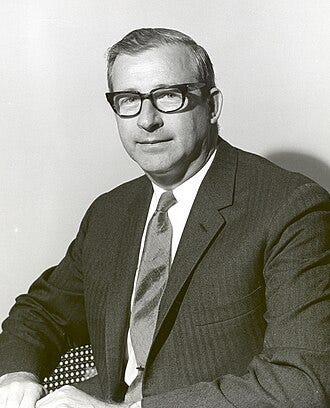On March 21st, 1969, Thomas Paine replaced Jim Webb as NASA Administrator. As Apollo was approaching Kennedy’s goal of a moon landing, Paine was faced with the challenge of defining the space agency’s future. Paine believed NASA should seek out other nations to cooperate on the exploration of space, especially the Soviet Union. In the months before the Apollo 11 moon landing, Paine began making quiet overtures to the Soviet Academy of Sciences.
He brought the subject up with President Richard Nixon as they were flying to Hawaii to greet the returning Apollo 11 crew. The President, along with Secretary of State William Rodger and National Security Advisor Henry Kissinger, told Paine to explore the possibilities.
Paine began offering the Soviets opportunities to collaborate on projects including the Viking mission to Mars. The diplomatic courtship between Paine and Mstislav Keldysh, the president of the Soviet Academy of Sciences took months and slowly evolved into a discussion of developing a way for Soviet and American spacecraft to dock with each other. Paine put forth the idea of a Soviet craft docking with Skylab. “The Skylab docking proposal was made so that we could convince the Soviets of the reality of our proposal,” Paine late explained. “We made this specific to avoid initiating prolonged general discussions in which everyone agreed to 'cooperate' but nothing actually happened.”
These discussions were kept private, but in July of 1970, President Nixon publicly stated his interest in cooperation with the Soviets in space. NASA’s Office of Manned Space Flight went to work studying rendezvous and docking between the two very different programs and the spacecraft that would be involved.
Paine resigned in September of 1970, and George Low became NASA’s Acting Administrator. He assured the Soviets he would continue Paine’s efforts and agreed to a meeting in Moscow in October of that year.



